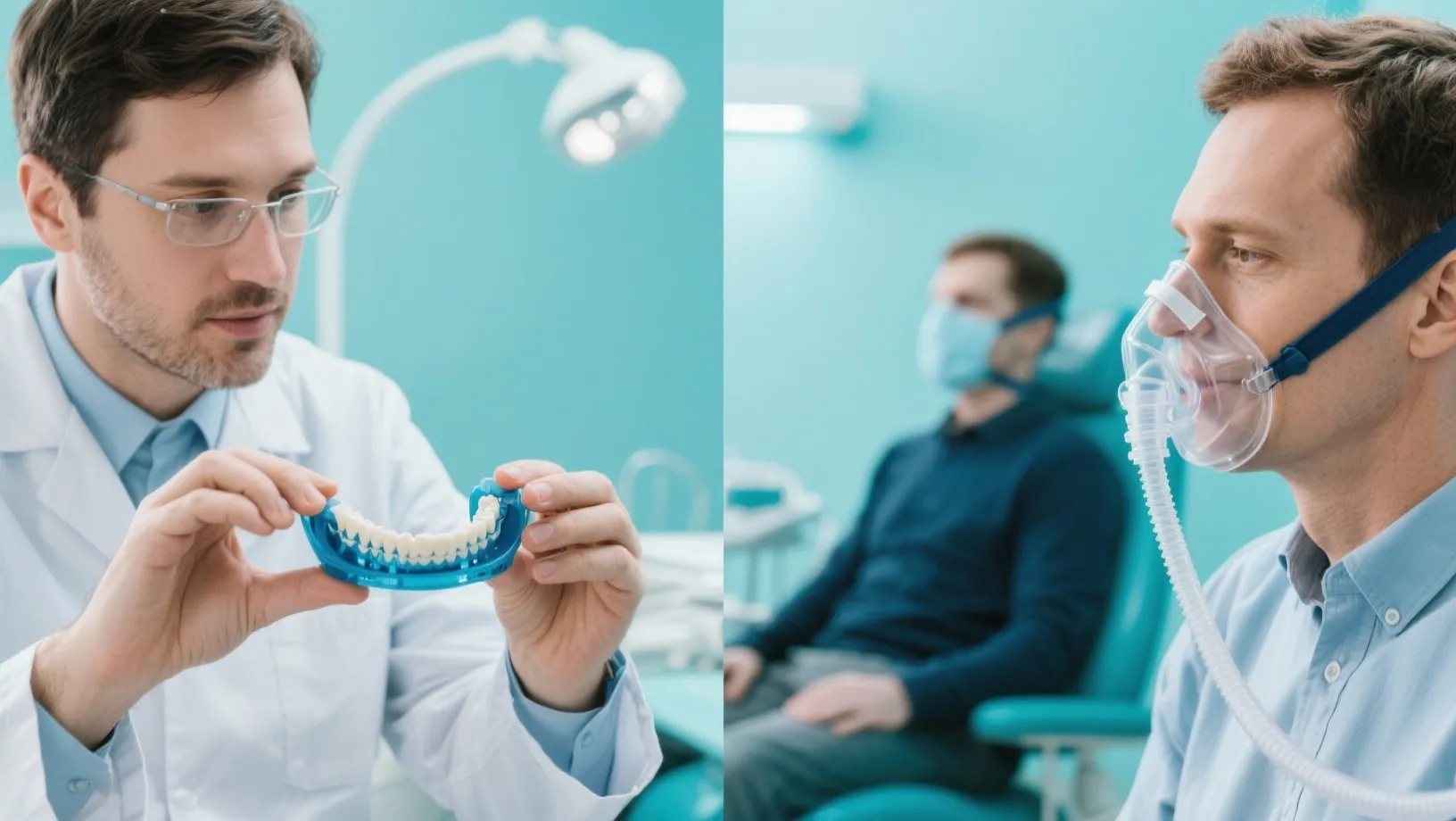Mandibular Advancement Devices vs CPAP in Severe Sleep Apnea: Rethinking the Standard of Care

Obstructive Sleep Apnea (OSA) affects millions worldwide, with CPAP therapy traditionally considered the gold standard. However, emerging evidence suggests that Mandibular Advancement Devices (MADs) may offer comparable or superior outcomes, particularly in severe cases.
Understanding the Current Landscape
Sleep apnea management has long been dominated by Continuous Positive Airway Pressure (CPAP) therapy. While effective, CPAP compliance rates remain suboptimal, with studies showing 30-50% of patients discontinuing treatment within the first year.
The CPAP Challenge
- Compliance Issues: Mask discomfort, claustrophobia, and lifestyle limitations
- Side Effects: Nasal congestion, dry mouth, and skin irritation
- Travel Limitations: Bulky equipment and power requirements
- Partner Disruption: Noise and physical barriers during sleep
Mandibular Advancement Devices: A Paradigm Shift
MADs work by repositioning the lower jaw forward, maintaining airway patency during sleep. Recent clinical trials demonstrate remarkable efficacy, even in severe OSA cases previously reserved for CPAP therapy.
Clinical Evidence
"Recent meta-analyses show MADs achieving 70-85% success rates in severe OSA patients, with significantly higher compliance rates compared to CPAP therapy."
Advantages of MAD Therapy
- Superior Compliance: 85-90% long-term adherence rates
- Cardiovascular Benefits: Improved heart rate variability and blood pressure control
- Quality of Life: Enhanced sleep quality and daytime alertness
- Convenience: Portable, silent, and travel-friendly
- Cost-Effective: Lower long-term healthcare costs
Patient Selection Criteria
Not all patients are ideal candidates for MAD therapy. Proper evaluation includes:
Ideal Candidates
- AHI 15-65 events per hour
- BMI < 35 kg/m²
- Adequate dental health and tooth retention
- Sufficient jaw mobility and TMJ function
- CPAP intolerance or preference for alternative therapy
Contraindications
- Severe periodontal disease
- Insufficient tooth retention
- Active TMJ disorders
- Central sleep apnea component > 25%
The Future of Sleep Medicine
As we advance into personalized medicine, the one-size-fits-all approach to OSA treatment is evolving. MADs represent a significant step toward patient-centered care, offering effective treatment with improved quality of life outcomes.
Emerging Technologies
- 3D Printing: Custom-fitted devices with precise jaw positioning
- Smart Monitoring: Integrated sensors for treatment efficacy tracking
- AI-Driven Titration: Automated adjustment protocols for optimal positioning
- Combination Therapy: Hybrid approaches combining MAD with positional therapy
Clinical Recommendations
Based on current evidence and clinical experience, I recommend:
- Comprehensive Evaluation: Multi-disciplinary assessment including dental, medical, and sleep medicine specialists
- Patient Education: Thorough discussion of all treatment options, including risks and benefits
- Trial Period: Initial 3-month evaluation with objective sleep study confirmation
- Long-term Monitoring: Annual follow-up with sleep studies and dental evaluations
Conclusion
The paradigm in sleep medicine is shifting from CPAP-centric to patient-centric care. MADs offer a compelling alternative for many patients with severe OSA, providing effective treatment with superior compliance and quality of life outcomes.
As practitioners, we must embrace this evolution and offer our patients the full spectrum of evidence-based treatment options. The future of sleep medicine lies not in choosing between CPAP and MADs, but in selecting the right therapy for the right patient at the right time.